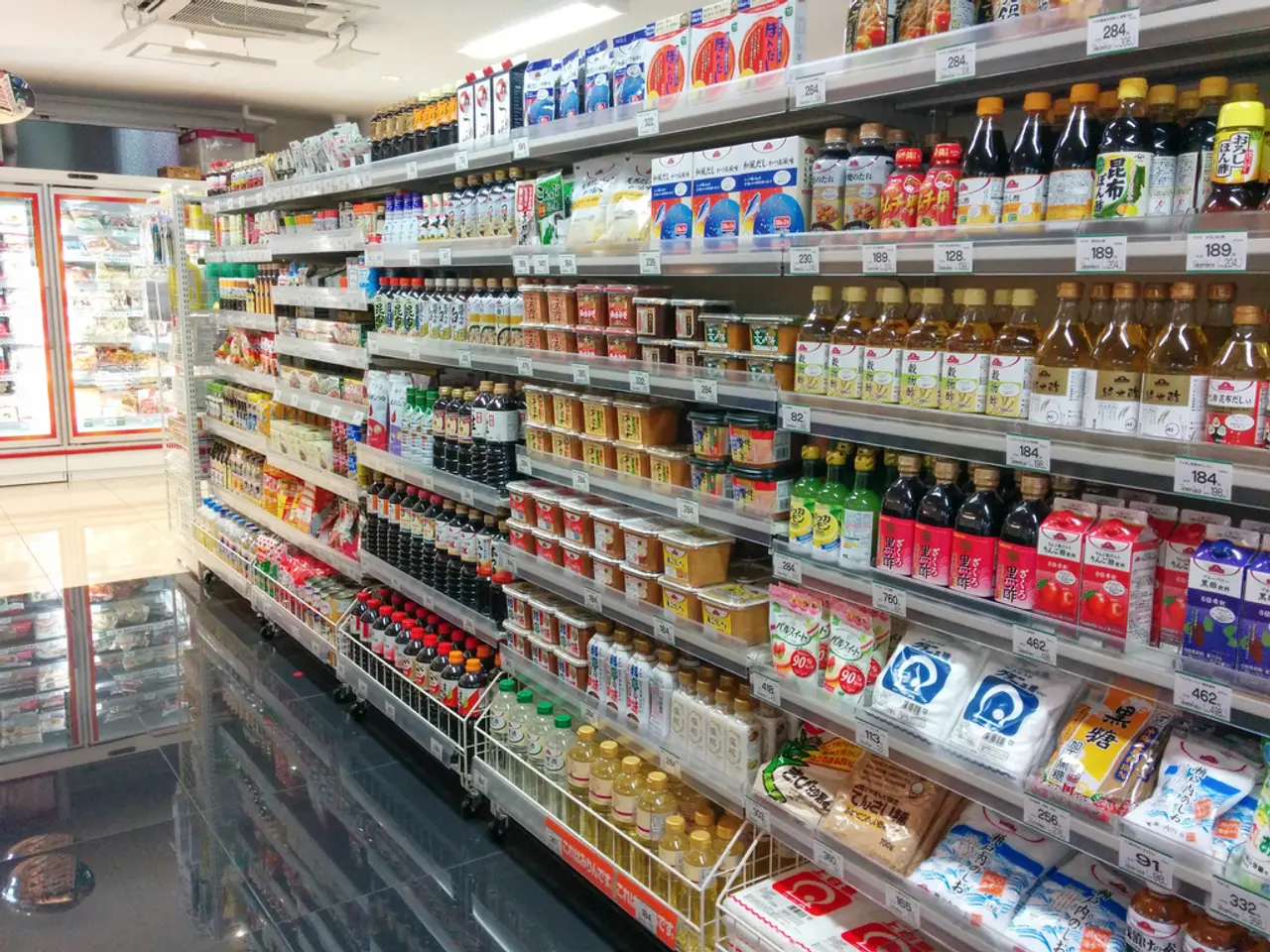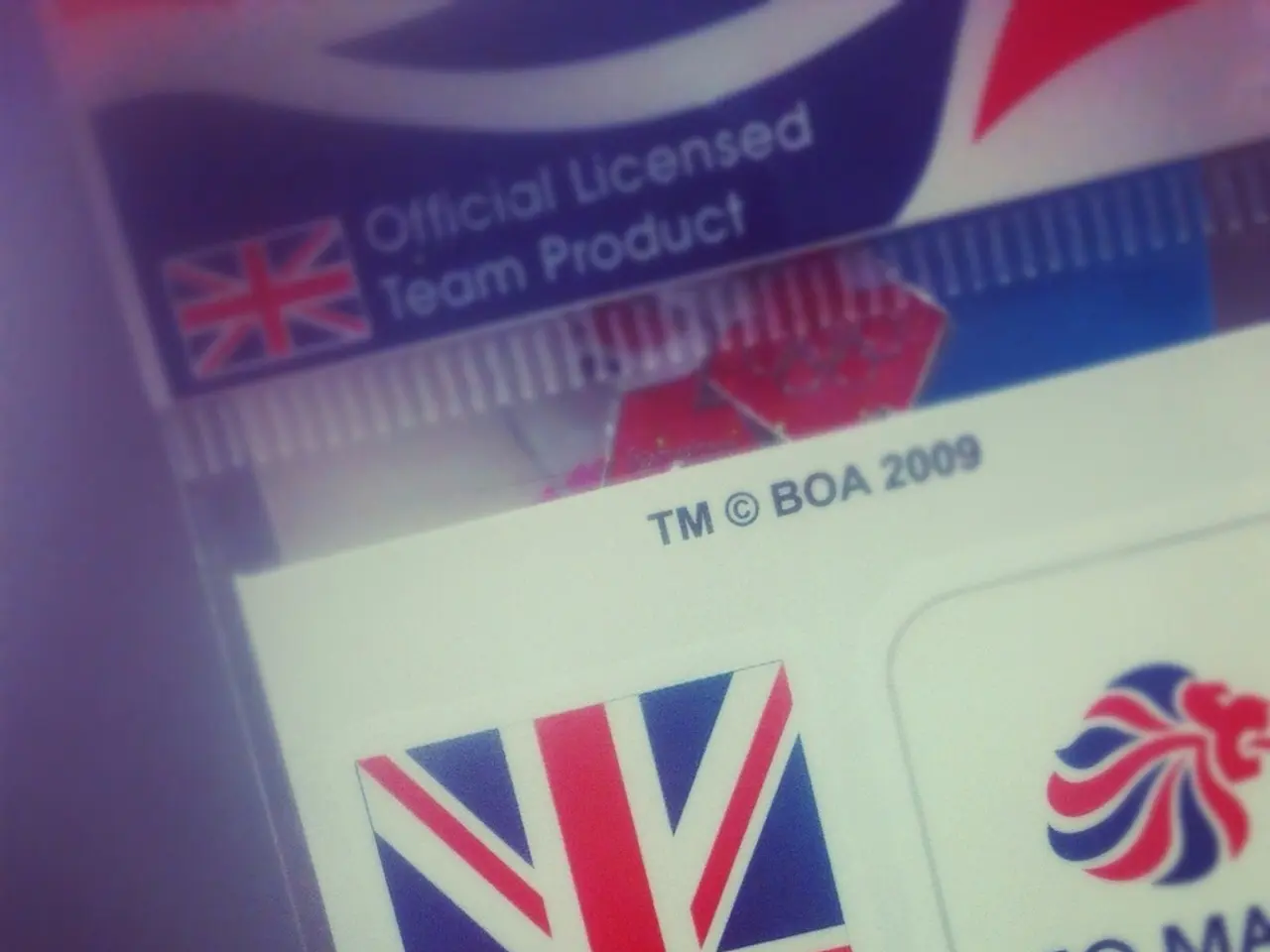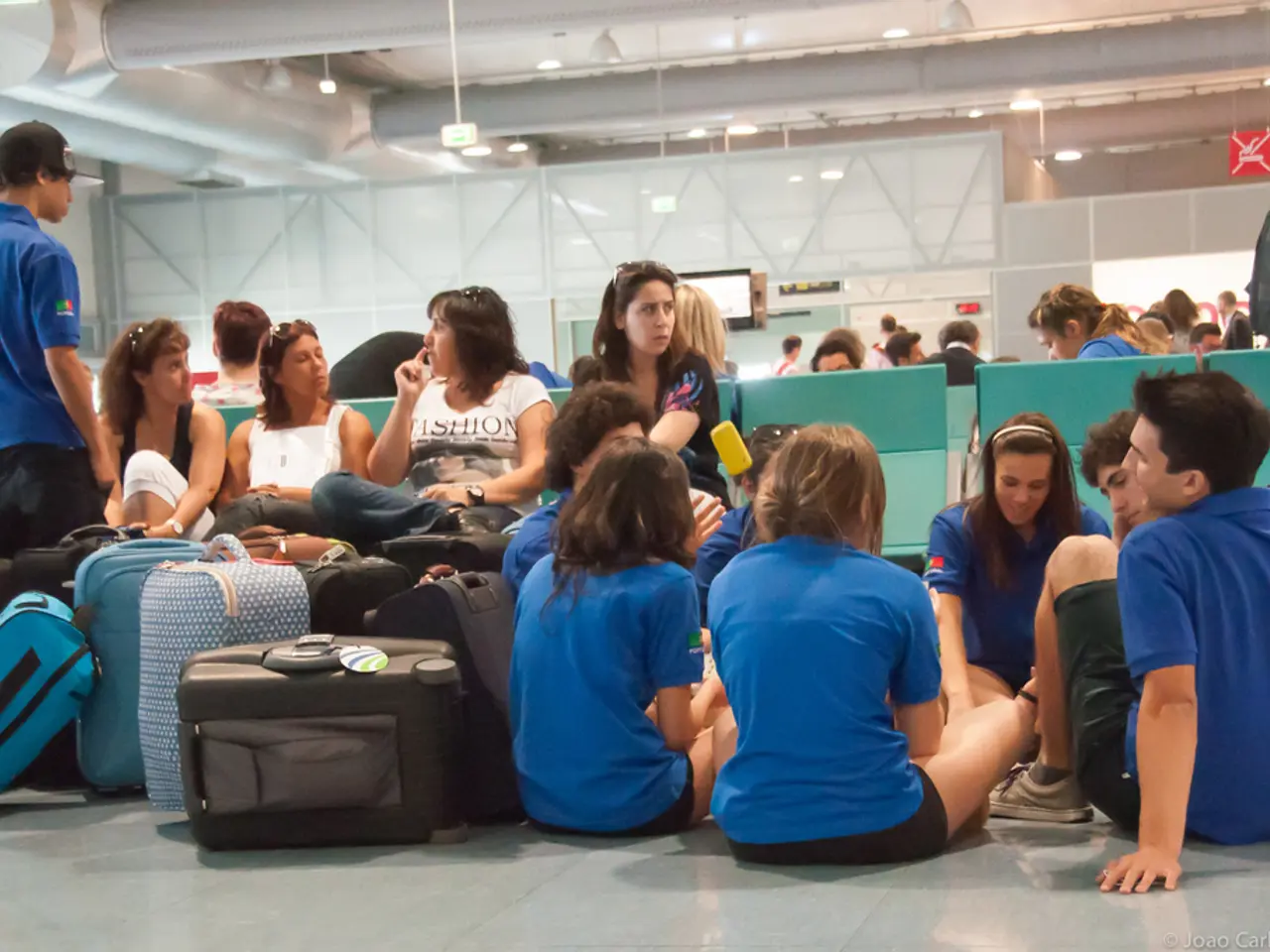Families hurry to stock up on back-to-school essentials prior to increased import taxes
In the United States, families are gearing up for the back-to-school season earlier than usual, with tariffs on imported goods playing a significant role in this shift. The anticipated price increases on key school essentials like clothing, backpacks, and electronics, many of which are imported, have led about half of shoppers with school-aged children to hit stores earlier than last year [1][3].
The tariffs, initially set to increase on August 1, threaten to raise costs further, especially on clothing and electronics, which are among the most expensive items on shopping lists [2]. These tariffs, imposed on imports from countries like China (up to 30%) and the European Union (scheduled for increase), have raised concerns among consumers, particularly President Donald Trump's tariffs [1].
Retail analysts predict that the full impact of tariff-driven price hikes would be felt when retailers run out of their pre-tariff inventory, which is anticipated to happen within weeks after early July [1]. However, consumer demand remains strong, with significant spending observed during promotional events like Amazon's four-day Prime event, reflecting a mix of early shopping and deal hunting to mitigate tariff-related price increases [1].
In an effort to attract budget-conscious shoppers, retailers are maximizing on summer sales and offering savings of up to 30% on back-to-school supplies and essentials during their events [1][4]. Target, for instance, has promised not to raise prices on 20 popular school supplies and backpacks [5]. Walmart, on the other hand, has reported that their most popular school supplies cost less this year compared to last year [6].
Despite the early shopping trend, consumers are expected to spend about $858 per family on clothes, school supplies, and electronics this year, a 2% decrease from last year [7]. This could be due to the increased number of shoppers seeking discounts at discount stores and participating in summer sales [1].
The tariff uncertainty has also prompted shoppers to get ahead of possible price increases and inventory issues. Two-thirds of Americans with school-aged children started shopping for the upcoming school year in July, the earliest on record [8]. This trend is expected to continue as American consumers prepare for the impact of tariff increases, which they are anticipated to feel in about 2 to 4 weeks [9].
On Tuesday, Trump announced a trade agreement with Japan, setting a 15% tariff on Japanese imports [10]. However, the impact of tariffs on consumers is predicted to catch up with them soon, according to John Zoldis, a retail analyst at Quo Vadis Capital [11].
In summary, the tariffs on imported goods in 2023 have influenced back-to-school shopping in the United States by motivating consumers to shop earlier and more strategically to avoid anticipated price hikes on key imported items such as clothing and electronics. The potential for higher prices is expected to be felt as the season progresses and inventory reflecting the new tariff rates enters the market.
References: [1] NPR. (2019). Why Back-To-School Shoppers Are Rushing To Buy. [online] Available at: https://www.npr.org/2019/07/19/744104633/why-back-to-school-shoppers-are-rushing-to-buy
[2] CNBC. (2019). Trump's tariffs could raise back-to-school costs for families. [online] Available at: https://www.cnbc.com/2019/07/22/trumps-tariffs-could-raise-back-to-school-costs-for-families.html
[3] USA Today. (2019). Back-to-school shopping: Here's what parents need to know about tariffs. [online] Available at: https://eu.usatoday.com/story/money/2019/07/23/back-school-shopping-tariffs-could-increase-costs-families/1788434001/
[4] Walmart. (2019). Back-to-School Savings. [online] Available at: https://www.walmart.com/cp/back-to-school/1228302
[5] Target. (2019). Back-to-School. [online] Available at: https://www.target.com/c/back-to-school-supplies/-/N-5xtfq
[6] CNN Business. (2019). Walmart's back-to-school prices are lower this year. [online] Available at: https://www.cnn.com/2019/07/23/business/walmart-back-to-school-prices/index.html
[7] Adobe. (2019). Back-to-School Spending Up 175% Year-Over-Year on Adobe Commerce Platform. [online] Available at: https://www.prnewswire.com/news-releases/back-to-school-spending-up-175-year-over-year-on-adobe-commerce-platform-300894025.html
[8] CNBC. (2019). Two-thirds of Americans with school-aged kids started back-to-school shopping in July. [online] Available at: https://www.cnbc.com/2019/07/23/two-thirds-of-americans-with-school-aged-kids-started-back-to-school-shopping-in-july.html
[9] NPR. (2019). American Consumers Are Feeling The Impact Of Tariff Increases. [online] Available at: https://www.npr.org/2019/07/24/745447422/american-consumers-are-feeling-the-impact-of-tariff-increases
[10] CNBC. (2019). Trump announces trade agreement with Japan, setting 15% tariff on Japanese imports. [online] Available at: https://www.cnbc.com/2019/08/05/trump-announces-trade-agreement-with-japan-setting-15-tariff-on-japanese-imports.html
[11] CNBC. (2019). Retailers are preparing for the impact of Trump's tariffs on consumers. [online] Available at: https://www.cnbc.com/2019/07/23/retailers-are-preparing-for-the-impact-of-trumps-tariffs-on-consumers.html
The tariffs, primarily on imports from countries like China and the European Union, have led to concerns among consumers, particularly those of President Donald Trump's tariffs, and are anticipated to drive up costs further on clothing and electronics within the retail industry. In an attempt to attract budget-conscious shoppers, retailers like Target and Walmart are offering savings on back-to-school supplies and essentials, positioning these businesses strategically in the midst of the ever-changing financial landscape.




